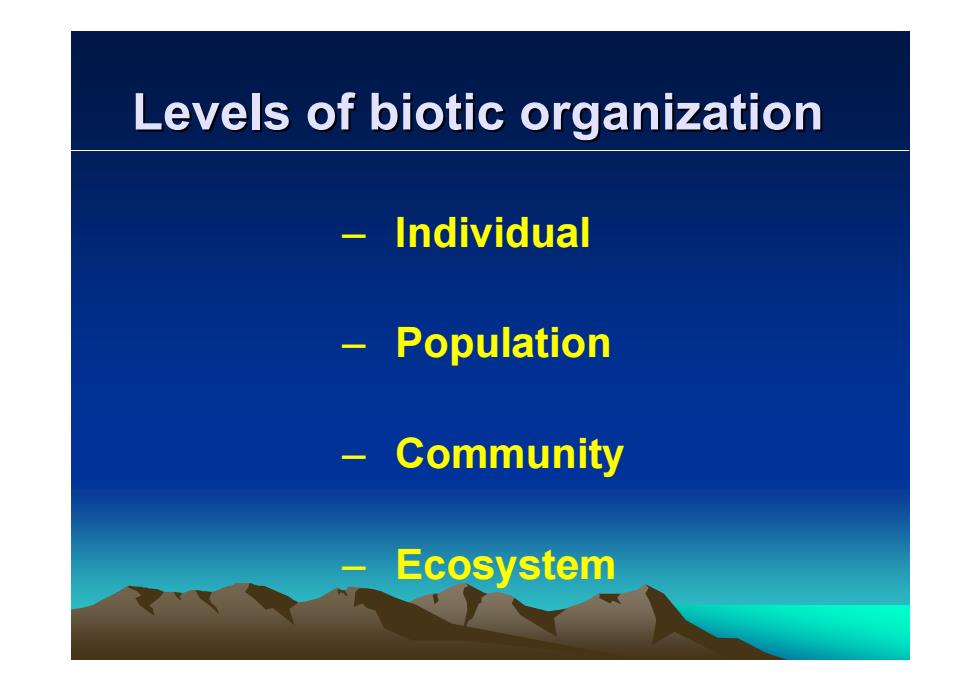
Chapter 2 The Individual Genetically uniform and usually discrete
Chapter 2 Chapter 2 The Individual The Individual Genetically uniform and usually discrete


The individual Individual organisms are the products of natural selection. Individuals are the fundamental units of populations,communities ecosystems and biomes which are discussed in later chapters. In this chapter we will look at individuals from an ecological perspective
The individual The individual Individual organisms are the products of natural selection. Individuals are the fundamental units of populations ,communities ,ecosystems and biomes which are discussed in later chapters. In this chapter we will look at individuals from an ecological perspective

Levels of biotic organization Individual Population Community Ecosystem
Levels of biotic organization Levels of biotic organization – Individual – Population – Community – Ecosystem

Macroenvironment Abiotic climatic factors (atmosphere) Biosphere, Habitat, Environment, Microen Biotope Biotic factors Abiotic (grazing,root edaphic factors competition) (soil) Components of the environment

(a) 2h 2 5 6 7 (b) 3

Microhabitats igure 4.2 The north-facing slope at this site supports a Mediterranean woodland.while the vegetation on the south- acing slope is mainly grassland. (b Figure 4.4 White sands and black sands create very different microclimates
Microhabitats Microhabitats

Individuals and Population Individuals:Genetically uniform and usually discrete -Why does the organism occur where it does and how does it interact for growth,resource procurement and reproduction? -The discipline is called Autecology, Physiological Ecology
Individuals and Population Individuals and Population • Individuals: Genetically uniform and usually discrete – Why does the organism occur where it does and how does it interact for growth, resource procurement and reproduction? –The discipline is called Autecology, Physiological Ecology

Responses to Environmental Changes-1 Environments vary in time and space. Organisms have different types of responses to environmental change. Behavioral responses involve an action that an animal takes to deal with a change in its environment. These responses are immediate. Example:a reptile may sun itself in the morning and seek shade in the hot afternoon
Responses to Environmental Changes Responses to Environmental Changes – 1 Environments vary in time and space. Organisms have different types of responses to environmental change. Behavioral responses involve an action that an animal takes to deal with a change in its environment. These responses are immediate. Example: a reptile may sun itself in the morning and seek shade in the hot afternoon

Behavioral responses of animals hibernation(抗寒) migration(避寒
Behavioral responses of animals Behavioral responses of animals hibernation hibernation(抗寒) migration migration(避寒 )